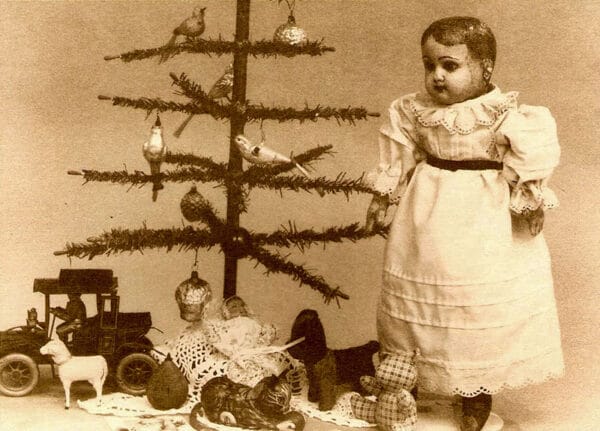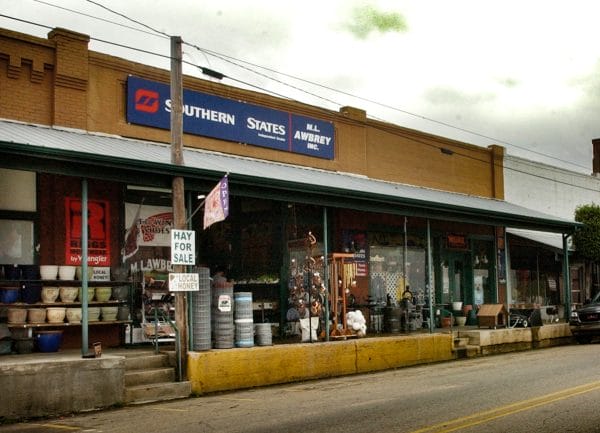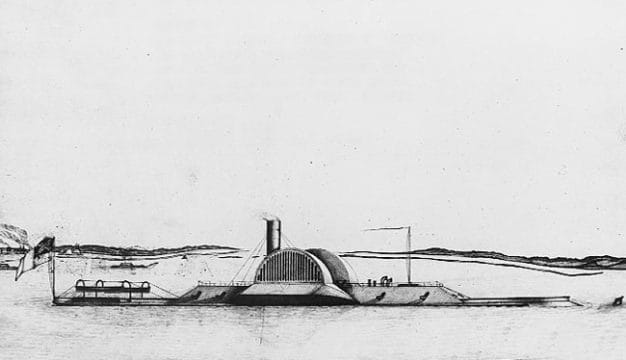Roanoke
 Ella Smith Doll
Roanoke is located in east central Alabama and is the largest city in Randolph County. It has a mayor/city council form of government. Roanoke was the home of Ella Gantt Smith (1868-1932), creator and manufacturer of the Indestructible Doll, or Ella Smith Doll. The dolls won the grand prize for most innovative toy at the 1904 World’s Fair in St. Louis, Missouri. Congressman William Anderson Handley was long-time resident of Roanoke, and politician and educator Arthur Wergs Mitchell (1883-1968) was born in Roanoke.
Ella Smith Doll
Roanoke is located in east central Alabama and is the largest city in Randolph County. It has a mayor/city council form of government. Roanoke was the home of Ella Gantt Smith (1868-1932), creator and manufacturer of the Indestructible Doll, or Ella Smith Doll. The dolls won the grand prize for most innovative toy at the 1904 World’s Fair in St. Louis, Missouri. Congressman William Anderson Handley was long-time resident of Roanoke, and politician and educator Arthur Wergs Mitchell (1883-1968) was born in Roanoke.
History
The area now known as Roanoke was settled originally in the 1830s and was initially named High Pine for nearby High Pine Creek. The city became known as Chulafinee in 1840. Soon after, the name was changed once again, to Roanoke, after Roanoke, Virginia, hometown of an early settler. During this era, industry in Roanoke included a saw mill, grist mill, and a tanning yard. The first school was organized in 1840, and the first school building was completed in 1848.
Some 120 men from the Roanoke are listed as having served in the Confederate Army during the Civil War, and two companies originated in Roanoke. Members of one of those companies participated in the Battle of Chancellorsville in Virginia.
 Downtown Roanoke
The East Alabama Railway (later the Central of Georgia Railway) extended a spur to Roanoke in 1888, and the city was officially incorporated in December 1890. The Roanoke Normal College opened in 1874 and was officially chartered in 1889. The school burned in 1890 and was rebuilt; later it was taken over by the city board of education and housed an elementary school.
Downtown Roanoke
The East Alabama Railway (later the Central of Georgia Railway) extended a spur to Roanoke in 1888, and the city was officially incorporated in December 1890. The Roanoke Normal College opened in 1874 and was officially chartered in 1889. The school burned in 1890 and was rebuilt; later it was taken over by the city board of education and housed an elementary school.
In 1897, Ella Smith began manufacturing dolls, animals, and decorative fruit from plaster and other materials and gained a nationwide reputation for her creations. She operated a factory in Roanoke until 1922 and held 11 patents, very unusual for a woman of that time. In 1905, entrepreneur and former U.S. congressman William Anderson Handley founded the W. A. Handley Manufacturing Company, a cotton mill, which became a mainstay of the local economy (with brief interruptions in 1907 and 1920) until it shut down in the 1970s. The company benefited from its proximity to the large number of local cotton farms.
Demographics
According to 2020 Census estimates, Roanoke recorded a population of 5,931. Of that number, 51.3 percent identified themselves as white, 46.0 percent as African American, 2.8 percent as two or more races, and 0.7 percent as Hispanic. The city’s median household income was $42,360, and per capita income was $23,590.
Employment
According to 2020 Census estimates, the workforce in Roanoke was divided among the following industrial categories:
- Manufacturing (37.4 percent)
- Educational services, and health care and social assistance (17.7 percent)
- Retail trade (15.4 percent)
- Public administration (8.2 percent)
- Finance, insurance, and real estate, rental, and leasing (5.3 percent)
- Arts, entertainment, recreation, accommodation, and food services (3.8 percent)
- Professional, scientific, management, and administrative and waste management services (3.4 percent)
- Other services, except public administration (2.8 percent)
- Transportation and warehousing and utilities (2.4 percent)
- Wholesale trade (2.0 percent)
- Construction (1.6 percent)
Education
Schools in Roanoke are part of the Roanoke City School District; the city has a public elementary school, middle school, and high school and two private schools.
Transportation
Roanoke is intersected by State Highway 22 (east-west), and U.S. Highway 431 (north-south) runs just east of the city. The Roanoke Municipal Airport, located south of the city, has one runway.
Events and Places of Interest
The Randolph County Historical Museum is located on Main Street in Roanoke. It features a collection of the renowned Ella Smith dolls. Other collections include local artifacts, pottery, and Civil War documents and memorabilia. The Roanoke Downtown Historic District is listed on the National Register of Historic Places and has a number of architecturally significant buildings in the Renaissance and Romanesque styles.
The city has two parks and a sports complex with football, baseball, soccer, softball, and basketball facilities.
Roanoke holds the Summer on Main Street festival on the first Saturday in June and also has an annual Christmas Parade in mid-December.
Additional Resources
The Heritage of Randolph County, Alabama. Clanton, Ala.: Heritage Publishing Consultants, 1998.
Owen, King Davis. “History of Roanoke Alabama.” Master’s Thesis, Auburn University, 1930.
Smith, Eugenia Elizabeth. “A History of Randolph County.” Master’s Thesis, Auburn University, 1938.


